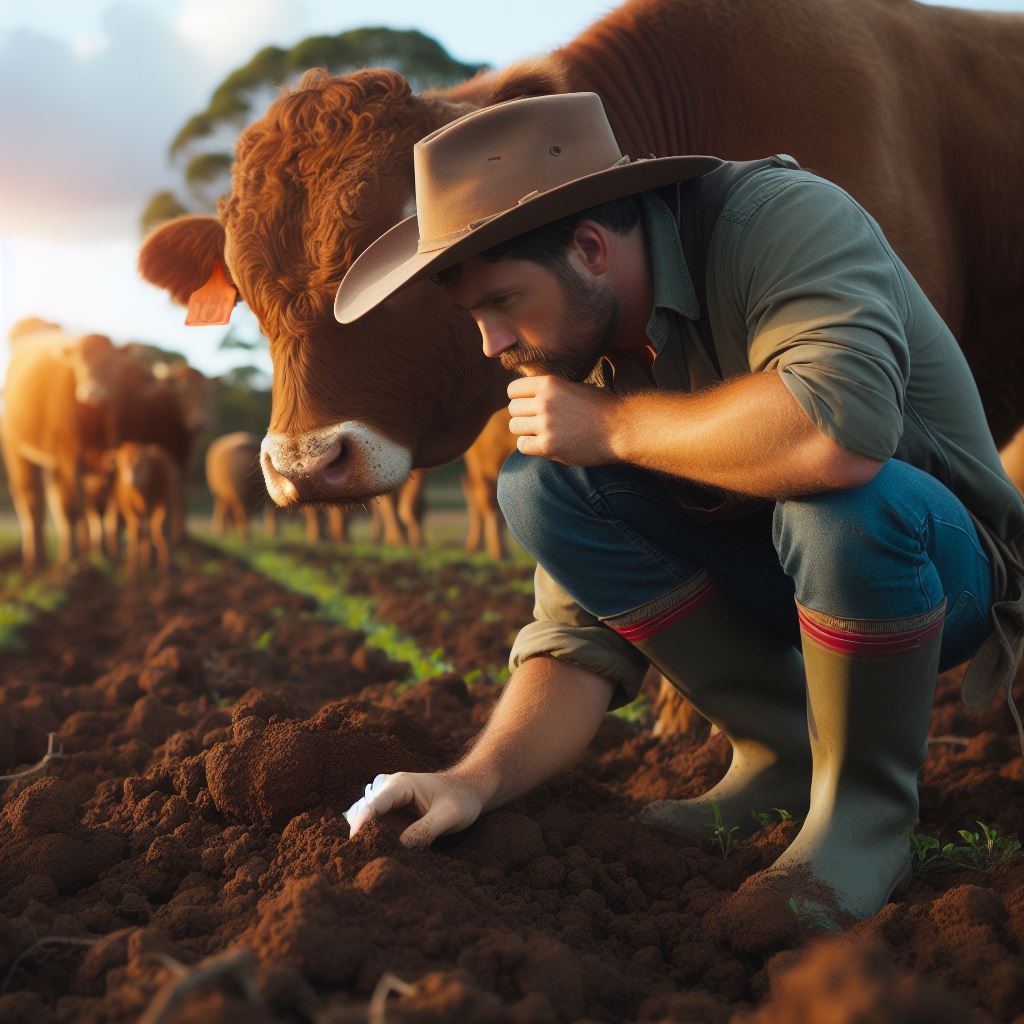Introduction
Indigenous farming techniques in Australia have a long and storied history that spans thousands of years.
These traditional methods, developed and honed by Aboriginal and Torres Strait Islander peoples, offer a wealth of knowledge and wisdom that holds significant relevance even in modern times.
Exploring these techniques is not merely an academic exercise; it is a journey into the sustainable practices of some of the continent’s earliest inhabitants.
By delving into the agricultural practices of Indigenous communities, we gain valuable insights into harmonious relationships with the land, biodiversity preservation, and natural resource management.
Moreover, understanding and incorporating Indigenous farming techniques into modern agricultural practices can offer tangible benefits.
These techniques often prioritize sustainability, resilience, and adaptation to local environmental conditions.
By integrating such practices, modern farmers can enhance soil health, increase crop yields, and mitigate the impacts of climate change.
Furthermore, exploring Indigenous farming methods fosters cultural appreciation and acknowledgment of the deep connection between Indigenous peoples and the land.
It acknowledges their custodial role as stewards of the environment and recognizes their invaluable contributions to sustainable land management practices.
In essence, delving into Indigenous farming techniques is not just a historical or academic pursuit; it is a pathway towards a more sustainable and harmonious future for agriculture in Australia.
It’s about learning from the wisdom of the past to cultivate a better tomorrow for both the land and its people.
Background on Indigenous Farming Practices
A. Long history of Indigenous farming techniques in Australia
- Indigenous farming techniques in Australia have a rich and diverse history.
- These techniques have been developed and refined over thousands of years.
- Indigenous communities have been practicing sustainable agriculture since ancient times.
- They have successfully adapted to the unique Australian environment and its challenges.
- Examples of Indigenous farming techniques include firestick farming and aquaculture.
- Through careful observation and experimentation, Indigenous farmers have cultivated various crops.
- Their farming practices have been essential for their survival and the maintenance of their culture.
B. Deep connection between Indigenous communities and the land
- Indigenous communities in Australia have a profound spiritual and cultural connection with the land.
- They view the land as a living entity, and their farming practices reflect this reverence.
- The land is seen as a provider and sustainer of life, and Indigenous farmers work in harmony with it.
- They observe and understand the natural cycles and rhythms of the land.
- The farming practices are guided by their intimate relationship with the environment.
- Indigenous farmers use traditional knowledge passed down through generations to inform their practices.
- They have a deep understanding of local ecosystems and how to manage them sustainably.
C. Sustainable and eco-friendly nature of Indigenous farming practices
- Indigenous farming practices in Australia are inherently sustainable and eco-friendly.
- They are based on principles of conservation, regeneration, and minimal environmental impact.
- Indigenous farmers prioritize the long-term health and productivity of the land.
- They use techniques that promote biodiversity and protect the natural environment.
- These practices help maintain soil fertility, prevent erosion, and reduce the need for artificial inputs.
- Indigenous farmers have developed sophisticated water management systems to ensure efficient use.
- They understand the delicate balance between resources and ensure their sustainable utilization.
Indigenous farming techniques in Australia have a long and significant history.
Indigenous communities have cultivated sustainable agricultural practices for thousands of years, perfecting techniques such as firestick farming and aquaculture.
These practices reflect the deep connection between Indigenous communities and the land.
Indigenous farmers view the land as a living entity, working in harmony with its natural cycles and rhythms.
Through traditional knowledge and an intimate understanding of local ecosystems, they manage the land sustainably.
Indigenous farming practices prioritize conservation, regeneration, and minimal environmental impact.
They focus on promoting biodiversity, maintaining soil fertility, and reducing the need for artificial inputs.
These methods help ensure the long-term health and productivity of the land.
Indigenous farmers have also developed sophisticated water management systems to efficiently utilize resources.
Overall, Indigenous farming techniques in Australia represent a sustainable and eco-friendly approach to agriculture.
Read: Future of Agri-Environmental Management in AU
Types of Indigenous Farming Techniques
A. Different types of Indigenous farming techniques prevalent in Australia
Indigenous farming techniques in Australia encompass a diverse range of practices that have been passed down through generations.
These techniques are deeply rooted in Aboriginal culture and have sustained Indigenous communities for thousands of years.
By understanding and adopting these techniques, we can learn valuable lessons about sustainable agriculture and land management.
B. The importance of biodiversity and the practice of “firestick farming
One significant Indigenous farming technique is “firestick farming,” which involves the controlled use of fire for land management.
Indigenous communities used fire to clear and maintain landscapes, promoting the growth of native plant species and supporting biodiversity.
This practice allowed them to create habitats for animals, regenerate soil fertility, and reduce the risk of large-scale, uncontrollable wildfires.
By regularly burning the land, Indigenous people ensured the health and productivity of their ecosystems, contributing to long-term sustainability.
C. The concept of “bush tucker” and its role in Indigenous agriculture
The concept of “bush tucker” is central to Indigenous agriculture in Australia.
Bush tucker refers to the diverse range of native plants, fruits, and animals that Indigenous communities traditionally relied on for food.
Through their deep knowledge of the land, Indigenous people understood how to cultivate and harvest bush tucker sustainably.
They would use specific farming techniques to encourage the growth of valuable food sources, such as yams, yabbies, and kangaroos.
These techniques included techniques like controlled seed dispersal, seasonal harvesting, and cultivation methods like yam daisy farming.
Your Personalized Career Strategy
Unlock your potential with tailored career consulting. Get clear, actionable steps designed for your success. Start now!
Get StartedRead: Biodiversity: Enviro Manager’s Role in AU

Traditional Knowledge and Farming Systems
A. Highlighting Oral Transmission
- Indigenous communities pass down farming wisdom orally.
- Elders share techniques through stories and rituals.
- Knowledge spans generations, fostering cultural resilience.
- Oral tradition ensures farming practices remain intact.
- This method emphasizes community cohesion and intergenerational bonds.
B. Sustainable Farming Systems
- Indigenous peoples pioneer sustainable agriculture.
- Practices prioritize land stewardship and resource conservation.
- Crop rotation maintains soil fertility and biodiversity.
- Traditional irrigation methods optimize water usage.
- Intercropping maximizes space and enhances crop resilience.
- Organic pest control techniques mitigate environmental impact.
- Harmony with nature guides planting and harvesting cycles.
- Traditional farming systems promote self-sufficiency and resilience.
C. Harmony Between Nature and Agriculture
- Indigenous practices integrate agriculture with nature.
- Farming respects seasonal rhythms and ecosystems.
- Land management techniques preserve biodiversity and habitats.
- Indigenous farming fosters symbiotic relationships between crops and native flora/fauna.
- Rituals honor nature’s cycles, ensuring sustainability.
- Traditional farming enhances soil health and fertility.
- Indigenous communities prioritize ecosystem health over profit.
- Agriculture complements rather than exploits the natural environment.
In Australia, Indigenous farming techniques exemplify a holistic approach.
Through oral transmission, sustainable practices, and harmony with nature, Indigenous communities cultivate resilient agricultural systems.
These methods not only sustain livelihoods but also preserve cultural heritage and environmental integrity.
Read: Renewable Energy in AU Farms: Enviro Impact
Challenges Faced by Indigenous Farmers Today
A. Impacts of colonization on Indigenous farming techniques
- Colonization introduced new farming methods that disregarded Indigenous sustainable practices.
- Land dispossession and forced migration disrupted the continuity of Indigenous farming systems.
- Indigenous farmers faced marginalization as foreign farming practices became dominant and more valued.
- Loss of access to traditional territories limited the availability of land for Indigenous farming.
B. Loss of traditional knowledge and farming practices
- The forced assimilation of Indigenous peoples eroded their traditional knowledge about farming techniques.
- Indigenous languages, which carried crucial information about farming, declined due to colonization.
- Cultural disruption caused younger generations to lose interest in learning and practicing Indigenous farming.
- Increased reliance on Western agricultural practices diminished the transmission of traditional farming knowledge.
C. Ongoing efforts to revive and preserve Indigenous farming techniques
- Indigenous communities are reclaiming their land rights to ensure the continuity of their farming practices.
- Collaborative projects between Indigenous farmers and researchers aim to document and preserve traditional farming knowledge.
- Local and national Indigenous organizations support initiatives to revive Indigenous farming techniques.
- Indigenous-led education programs focus on revitalizing the knowledge and skills required for sustainable farming.
Therefore, Indigenous farmers in Australia face various challenges as a result of colonization.
The introduction of foreign farming practices, land dispossession, and cultural disruption have impacted Indigenous farming techniques.
The loss of traditional knowledge and farming practices further hinders the preservation of Indigenous agricultural heritage.
However, ongoing efforts to revive and preserve Indigenous farming techniques provide hope for the continuation of sustainable practices and the reclamation of Indigenous food sovereignty.
Read: Tech Advances in Enviro Management: AU Focus
Delve into the Subject: Mining Engineer Skills in Natural Resource Mgmt
Explore Further: Day in the Life of an Aussie Agri Scientist
Importance of Preserving and Learning from Indigenous Farming Techniques
A. Incorporating Indigenous Practices in Modern Agriculture
- Enhances soil fertility through traditional methods.
- Promotes biodiversity with crop rotation and companion planting.
- Minimizes reliance on synthetic pesticides and fertilizers.
- Improves water management through techniques like contour farming.
- Supports sustainable land use with agroforestry and terracing.
B. Role of Indigenous Farming Techniques in Addressing Climate Change and Food Security
- Mitigates carbon emissions through agroecological practices.
- Increases resilience to extreme weather events.
- Preserves indigenous crop varieties, enhancing genetic diversity.
- Maintains soil health, crucial for long-term food production.
- Provides local food security by adapting to regional conditions.
C. Recognition and Respect for Indigenous Knowledge and Contributions
- Acknowledges centuries of successful agricultural practices.
- Upholds cultural traditions and holistic approaches to farming.
- Fosters collaboration between Indigenous and non-Indigenous farmers.
- Honors Indigenous land stewardship and custodianship.
- Promotes social justice by valuing Indigenous knowledge systems.
Incorporating Indigenous farming techniques into modern agriculture offers numerous benefits.
From enhancing soil fertility and promoting biodiversity to addressing climate change and ensuring food security, these practices offer valuable insights and solutions.
Recognizing and respecting Indigenous knowledge is essential for sustainable agricultural development and cultural preservation.
By embracing traditional wisdom alongside modern innovations, we can create a more resilient and equitable food system for future generations.
You Might Also Like: Forestry Laws in Australia: A Quick Guide
Stand Out with a Resume That Gets Results
Your career is worth more than a generic template. Let us craft a resume and cover letter that showcase your unique strengths and help you secure that dream job.
Get HiredDiscover More: Forestry 101: An Intro to Foresters in Australia
Conclusion
A. Main points discussed in the blog post
- Indigenous farming in Australia is rich in diversity.
- Techniques are deeply rooted in sustainability and respect.
- Practices vary across different Indigenous communities.
- Key methods include firestick farming and aquaculture.
- Indigenous farming promotes biodiversity and land stewardship.
B. The importance of understanding and valuing Indigenous farming techniques
- Indigenous farming holds invaluable ecological knowledge.
- It’s vital for sustainable land management.
- Honoring Indigenous practices respects cultural heritage.
- Collaboration fosters mutual learning and respect.
- Recognition enhances conservation efforts and food security.
C. Encouraging further research and exploration of Indigenous agricultural practices
- More research amplifies understanding and appreciation.
- It aids in preserving traditional knowledge.
- Collaboration promotes shared learning and innovation.
- Indigenous farming can inspire modern sustainable practices.
- Explore partnerships for holistic land management approaches.
Understanding and valuing Indigenous farming techniques is not merely about acknowledging the past; it’s about shaping a sustainable future.
Let’s continue to delve deeper, engage respectfully, and cultivate a more harmonious relationship with the land and its custodians.




